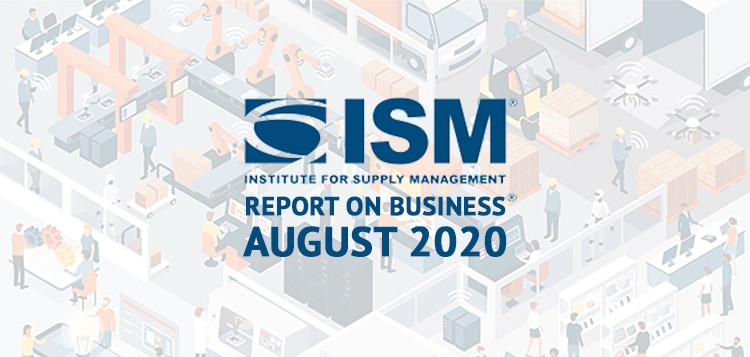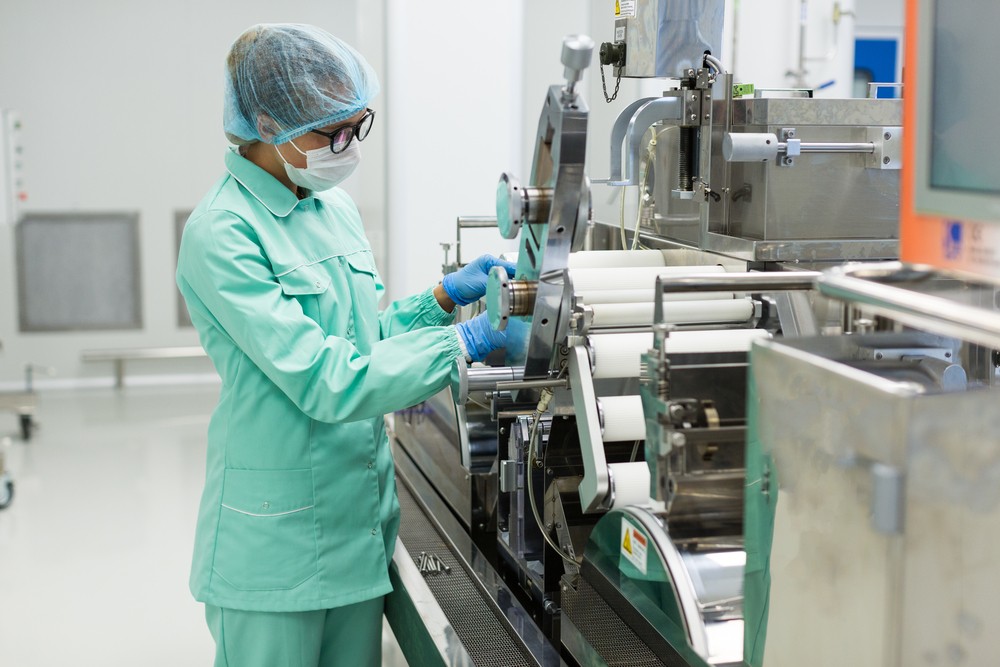August 2020 Manufacturing ISM® Report On Business® Continues to Trend Upward

Continuing its rebounding trend since May, the August 2020 Manufacturing ISM® Report On Business® has registered at 56 points, marking the highest point in nearly two years, since it registered 58.8 in November 2018. It’s a strong signal for the manufacturing industry. Not only does the PMI continue to rise despite economic uncertainties caused by COVID-19, growth prospects appear on the horizon, fueling confidence in an economy that only six months ago was trending sharply downward.
Good news across the industry
The August report isn’t just good for manufacturing — it’s ideal. Metrics across the board are trending in the right direction, as evidenced by the continued climb of the overall PMI.
The biggest cause for celebration is the 6.1-point increase in new orders, signaling strong confidence from customers in the second half of the year. Both imports and exports are up 2.5 and 2.9 points respectively, as evidence of renewed trade even amidst continued tensions with some of the U.S.’ largest trade partners. Employment is also up 2.1 points. The implication of the report is plain to see: manufacturing’s upward trend is building strength.

COVID-19 concerns are dissolving
So far, manufacturing’s recovery has been a cautious one. The PMI and its benchmarks have risen higher every month; but now, firmly in expansion territory, executive sentiment has finally caught up.
“Current sales to domestic markets are substantially stronger than forecasted. We expected a recession, but it did not turn out that way. Retail and trade customer markets are very strong and driving shortages in raw material suppliers, increasing supplier orders.” (Fabricated Metal Products)
“We are seeing solid month-over-month order improvement in all manufacturing sectors such as electrical, auto and industrial goods. Looking to add a few factory operators.” (Plastics & Rubber Products)
For some sectors, COVID-19 has actually presented “good problems.” Hiring demands are rising, demand for materials is increasing, and even prices are on the rise — all indicative of a strengthening industry post-pandemic. It’s a report reminiscent of the end of 2018, when November’s benchmarks looked virtually identical across the board.

What’s driving the growth?
Although the figures in the August 2020 report speak for themselves, the question still remains: what’s driving them? A natural return to normal is expected after the plunge in manufacturing output back in April; however, today’s figures speak to something more.
Reshoring in an attempt to rebuild and protect supply chains appears to be the biggest driver. As companies bring more manufacturing back to U.S. soil, production, employment, and general output benefit. This, coupled with new investments in technology made to combat the pandemic, is enough to push domestic production to new heights.
There’s also evidence to suggest that trade tensions with China may be fueling domestic growth. The negative ramifications of the Trump Trade Wars is widely documented (especially in agriculture); however, things may be looking up for traditional producers. The recent move to thoroughly evaluate Chinese trade partners like SMIC opens the door for potential U.S. manufacturers to nab market share.
Whatever the drivers of manufacturing’s third quarter resurgence, it looks likely to continue into the end of 2020. If it does, manufacturing — and likely the DOW industrial index — will be poised to crack all-time highs post-pandemic.
